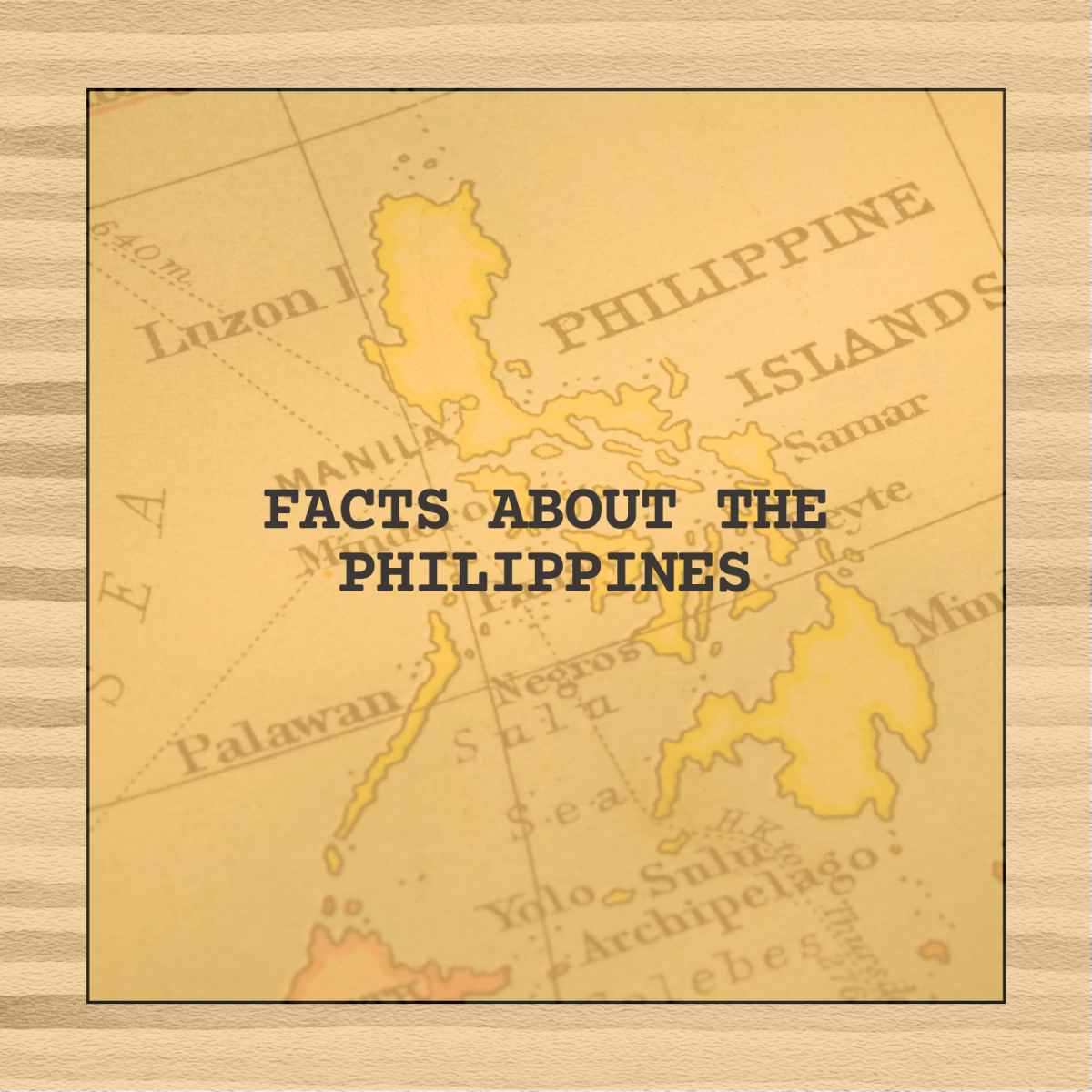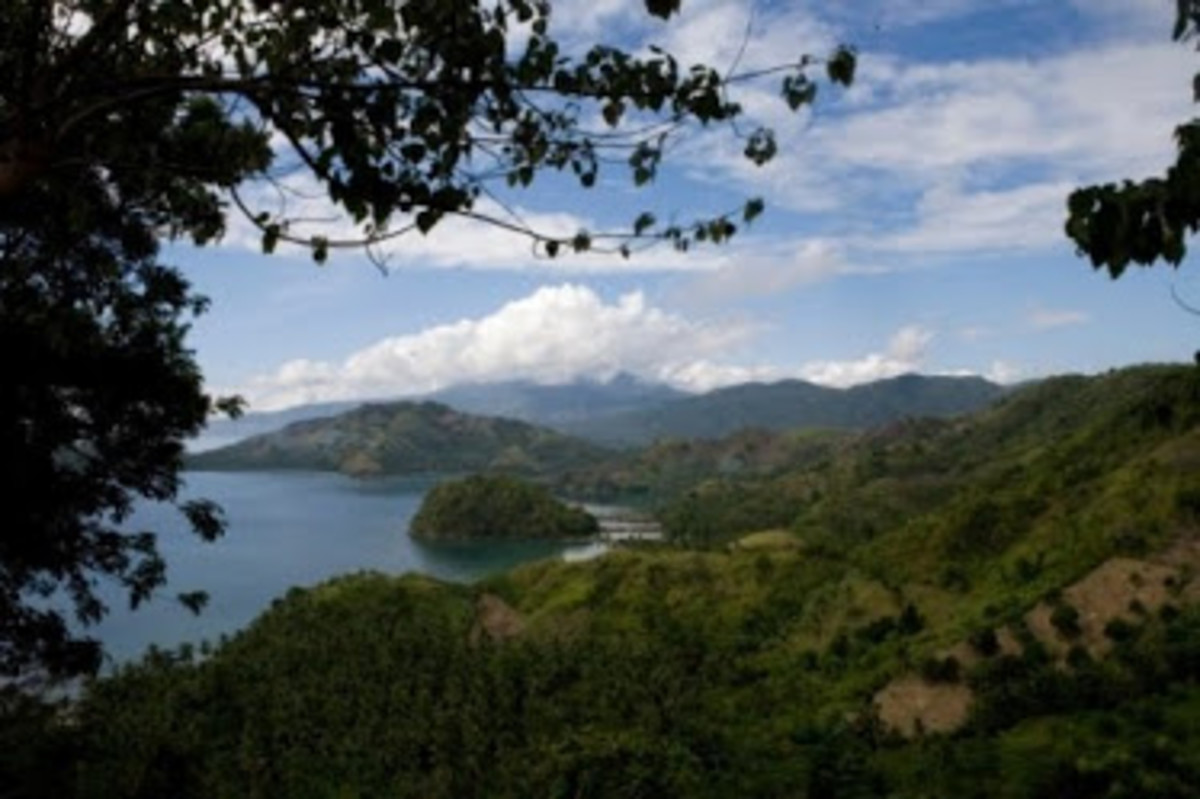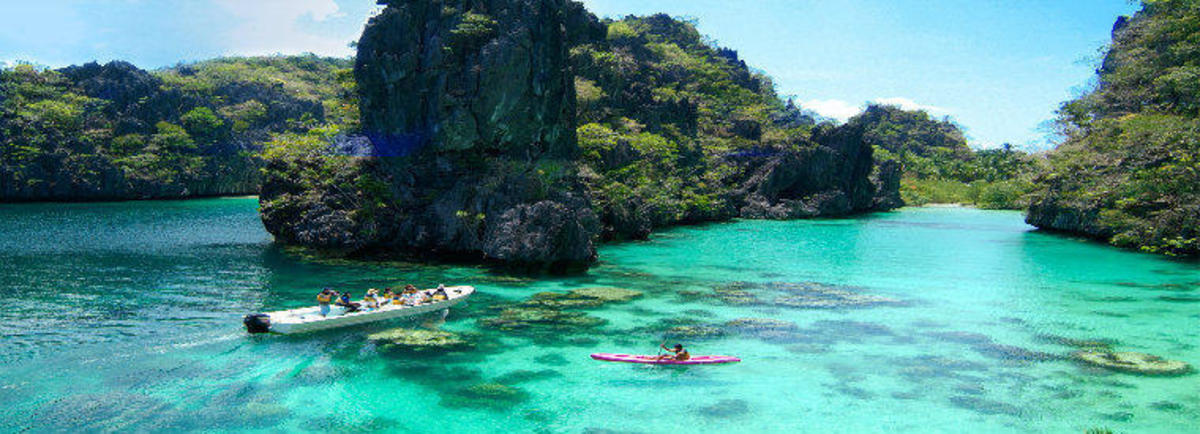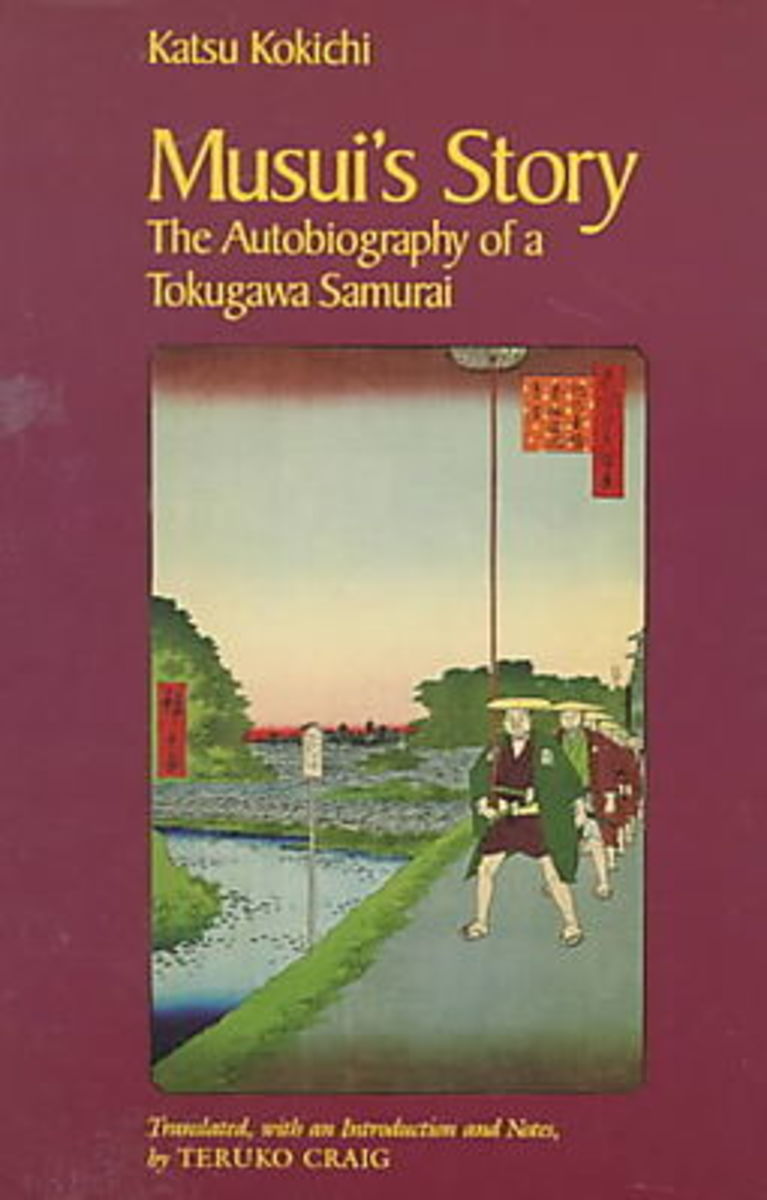Best Books about the Philippines
Book Guides to increase your knowledge and understanding about the Philippines

These list of books are perfect for anyone interested in learning the Philippine culture, its history, political and economic issues. This set of reading list will definitely increase your knowledge and can give you a real picture into the various aspects of Philippine society in the old and modern times.
The Philippines is once tagged as the melting pot of culture in Asia due to the fact that it is a nation built by the amalgamation of cultures from East meets West. I'm sure you this book recommendations will be really helpful for you!
Culture Shock! Philippines: A Survival Guide to Customs and Etiquette - by Alfredo Roces, Grace Roces
CultureShock! Philippines is a survival guide for anyone living, working, or wanting to discover life in the Philippines. Settling into a foreign land is never easy but with this book, you will learn to understand the importance of amor-propio, appreciate the Filipino ways, and learn about the history and culture of this diverse country. Find out the importance of family to the Filipinos, how to communicate with the locals, and learn the appropriate business etiquette. Packed with a resource guide, glossary, contact numbers, and useful advice. This is definitely essential for anyone wanting to fit in and enjoy life in the Philippines.
A War of Frontier and Empire: The Philippine-American War, 1899-1902 - by David J. Silbey
A fter the overwhelming American victory in the Spanish-American War, President McKinley, after considerable (he claimed) soul-searching, decided to annex the Philippine Islands. His move provoked considerable opposition from anti-imperialist Americans. More importantly, it provoked outrage among various Filipino nationalist groups, who had been struggling to liberate the islands from Spanish control. The result was a complicated, confusing, and brutal war that kept the Philippines under American control and solidified the nation's role as a Pacific power. Silbey's chronicle of that conflict is fair and frequently surprising. As Silbey indicates, the Americans were hardly brutal imperialists; their motives for holding the islands were a mixture of self-interest and altruism. Although Filipino nationalists fought bravely, they were hindered by a fragmented political movement and erratic leadership. Silbey's portrait of the personality and career of Filipino icon Emilio Aguinaldo is particularly interesting. This is a well-researched examination of a struggle that, ultimately, helped forge a new nation out of disparate elements.
In Our Image: America's Empire in the Philippines - by Stanley Karnow
Philippine history is often described as 300 years in a (Spanish) convent and 50 years in Hollywood. Karnow, who worked for 30 years as a journalist in Asia, narrates the careers of several individuals who influenced the Philippines. His treatment of the indecisiveness of President McKinley over the issue of empire and of the egotistical General MacArthur make the work a definite purchase for libraries. Weaker in treatment is the post-independence period, where Karnow concentrates upon Marcos and Aquino, both of whom he knows. Particularly revealing is his account of the White House coming to terms with the Aquino election victory. Those who love swashbuckling history will enjoy this work.
Philippines: Islands of Enchantment - by Alfred Yuson
The Philippines: Islands of Enchantment captures all of the marvels and excitement to be found in cosmopolitan Manila and the tropical islands beyond-with beautiful photography and fascinating, informative text.
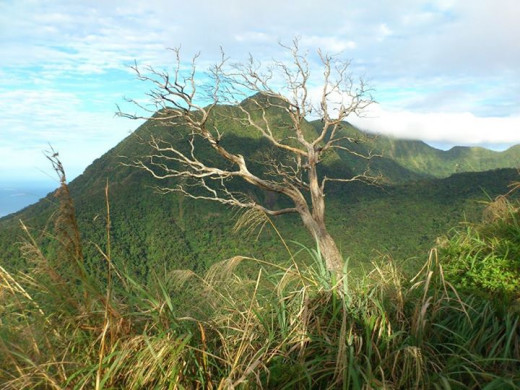
Why America Fights: Patriotism and War Propaganda from the Philippines to Iraq - by Susan Brewer
In Why America Fights, Brewer offers a fascinating history of how successive presidents have conducted what Donald Rumsfeld calls "perception management," from McKinley's war in the Philippines to Operation Iraqi Freedom. Brewer's intriguing account ranges from analyses of wartime messages to descriptions of the actual operations, from the dissemination of patriotic ads and posters to the management of newspaper, radio, and TV media. When Woodrow Wilson took the nation into World War I, he created the Committee on Public Information, led by George Creel, who called his job "the world's greatest adventure in advertising." In World War II, Roosevelt's Office of War Information avowed a "strategy of truth," though government propaganda still depicted Japanese soldiers as buck-toothed savages. In the Korean War, the Truman administration delineated differences between "good" and "evil" Asians, while portraying the conflict as a global battle between the Free World and Communism. After examining the ultimately failed struggle to cast the Vietnam War in a favorable light, Brewer shows how the Bush White House drew explicit lessons from that history as it engaged in an unprecedented effort to sell a preemptive war in Iraq. Yet the thrust of its message was not much different from McKinley's pronouncements about America's civilizing mission.
Pacific Rims: Beermen Ballin' in Flip-Flops and the Philippines' Unlikely Love Affair with Basketball - by Rafe Bartholomew
Welcome to the Philippines, where the men are 5'4," the everyman's Air Jordans are a pair of flip-flops, and the rhythm of life is punctuated by the bouncing of a basketball...
Allured by the idea of an island nation full of people who love the game as irrationally as he does, American journalist Rafe Bartholomew arrived in Manila to unlock the riddle of basketball's grip on the Philippines. On his unforgettable journey, Bartholomew spends a season inside the locker room of a Philippine professional team, dines with politicians who exploit hoops for electoral success, travels with a troupe of midgets and transsexuals who play exhibition games at rural fiestas, and even acts in a local soap opera. Sweating his way through hard-fought games of 3-on-3, played with homemade hoops for 50-cent wagers, Bartholomew uses a mix of journalistic knowhow and the hard- court ethics he learned from his dad to get in the paint and behind the scenes of Filipinos' against-all-odds devotion to the sport.
Rebellion and Repression in the Philippines - by Richard J. Kessler
T he fall of the Marcos regime in the Philippines has not resolved the basic social and economic problems in that former colony of the United States. Kessler and Jones provide much needed perspectives on these problems, although they approach them in very different ways. Kessler's book is an academic study concentrating on rebellions in the Philippines, showing that the current Communist situation is very much a part of that tradition. Jones, in contrast, is a journalist (he's the Manila special correspondent for The Washington Post ) who went underground and lived with Communists over an extended period of time. His book is overwhelmingly based on personal interviews with the principals concerned.
Bread and Rice: An American Woman's Fight to Survive in the Jungles and Prison Camps of the WWII Philippines - by Macauley Doris
Shortly after the war in the Pacific broke out in December 1941, the author and her husband stashed supplies to last them six months into three suitcases, and headed into the choking bamboo jungles outside Luzon.
For a year and a half, they lived from day to day, hiding among the little-known mountain people who sheltered and helped them in their grim struggle for existence. Always just a step ahead of the Japanese army, they were forced to move constantly-a week here, a month there. The refugees faced monsoon rains and the fear of malaria; they lived on dwindling stores of food; traded even their most precious possessions with loyal Filipino villagers who wouldn't betray their hideout-and a few who were not so trustworthy-and assisted the bands of young guerrillas whenever possible.
Macauley's narrative is rich in characterization: Spalding, the American weakling who shared a part of the journey before surrendering to the Japanese; Placido, the always-opportunistic head of his tribe, who nonetheless protected the refugees and provided them with a home; and especially Fabian, the simple and courageous tao, who time and again risked his own life to help the Americans, until finally they were faced with the choice to surrender to the Japanese or see all of Fabian's family killed. What followed were the horrifying weeks in primitive Japanese prisons until finally they were taken to the internment camp at Santo Tomas, and, later, Los Banos.
Bread and Rice is a young woman's stirring memoir, written with profound depth and immediacy, of those grueling, terrifying days on the run.
The Tropical House: Cutting Edge Design in the Philippines - by Elizabeth Reyes
The Tropical House celebrates a growing trend toward stylish globalization in interior design. More than 25 stunning houses and condos comprise a synthesis of East-West trends and contemporary furnishings-as Filipino designers merge sleek modernist furniture with local designers' & ´soulful creations' in natural hardwoods and other tropical materials.
Do you think Philippines has a very interesting facts and history?
Footnotes to Philippine History - by Renato Perdon
T he author accomplished what he ought to do, that is, provide a ready, easy background historical resource for our overseas Filipino workers about Filipinoness; a good historical narrative and at times quite satisfying since he injects nationalistic commentary and understanding of the events in our history and not falling into the usual self-censorship brought about by a mis-educated Filipino mind. I find the book `a good one to taste' - for a start to learn about our history, to share, keep and give to friends and relatives; a truly handy primer, firstly for our own selves as Filipinos and our descendants, and for informing our foreign hosts and friends in foreign lands. . . . We Filipinos need this kind of handbook in helping discover, know and understand ourselves from our past and in the struggle to revive our nationalism and thus regain our homeland from our traitorous fellowmen and their foreign partners/sponsors." --The Philippine Star by Domini M. Torrevillas
Muslims in the Philippines - by Cesar Adib Majul
This unique book deals primarily with the histories of the sultanates of Sulu and Maguindanao (present-day Southern Philippines) from their beginnings until the end of Spanish period. In their 400 years of existence, they expanded to control a portion of Borneo, and fought the Spaniards fiercely, never actually being colonized with their northern brothers. The author also includes a chapter on how the sultanate functioned- describing the system of government that was more centralized than any other part of the Philippines, and thus the only one that could muster effective resistance against the Spaniards. The role of Islam is highlighted as the very basis of the Moros' determination to resist European colonization. A section of excellent pictures is provided, including portraits of sultans in their royal spendor and a collection of Moro weapons.
The Anti-Marcos Struggle: Personalistic Rule and Democratic Transition in the Philippines - by Mark R. Thompson
The Philippine dictatorship of Ferdinand E. Marcos was characterized by family-based rule and corruption. This sultanistic regime - in which the ruler exercised power freely, without loyalty to any ideology or institution - had to be brought down because Marcos would never step down. In this study, Mark Thompson analyzes how Marcos's opponents in the political and economic elite coped with this situation, and why their struggle resulted in a transition to democracy through "people power" rather than through violence and revolution. Based on 150 interviews that Thompson conducted with key participants, and on unpublished materials collected, the book examines the transition process. It reveals how anti-Marcos politicians backed a terrorist campaign by social democrats, and then, after its failure, joined a "united front" with the communists. But when opposition leader Benigno S. Aquino, Jr., was assassinated in 1983, the politicians were able to draw on public outrage and challenge Marcos at the polls. The opposition's "moral crusade" brought down Marcos and enabled the new president, Corazon C. Aquino, to consolidate democracy despite the troubling legacies of the dictatorship. Thompson argues that the Philippines' long-standing democratic tradition and the appeal that honest government had to the Filipinos were important elements in explaining the peaceful transition process.
Red Sun Setting: The Battle of the Philippine Sea (Bluejacket Paperback Series) - by William T. Y'Blood
Many regard this work as the definitive account of a controversial conflict of the war in the Pacific, the June 1944 battle known as the "Great Marianas Turkey Shoot." Drawing on ten years of research and told from the viewpoint of the fliers and sailors who were on the firing line, William T. Y'Blood leads the reader through every stage of the battle, from the dogfights to the persistent attacks on the Japanese carriers to the frantic efforts of the returning fliers to land on friendly carriers. He takes the battle from the initial planning through the invasion of the Marianas and the recriminations that followed, describing Admiral Spruance's decision to allow U.S. forces to remain on the defensive and giving blow-by-blow details of the action. This intensive study of what many believe to be a major turning point in the Pacific War has remained an important reference since it was first published in 1981. 272 pages. 25 photographs. Appendixes. Notes. Bibliography. Index. Paperback. 6 x 9 inches.
America's Boy: A Century of United States Colonialism in the Philippines - by James Hamilton-Paterson
Having lived in the Philippines for 18 years, Hamilton-Paterson has acquired a sophisticated understanding of Philippine history and culture. He witnessed the zenith and then the downfall of the Marcos regime. Yet he has observed a persistent nostalgia for the Marcos years among Filipinos. This book, his explanation of these historical crosscurrents, is exceptional for the grace of its writing and for the range and nuance of the author's judgment. Ferdinand and Imelda Marcos emerge not simply as the caricature despots of the popular press but as products of a culture that for centuries had functioned through strong tribal personalities who wielded power and dispensed favors. Imelda's bravura shopping expeditions and Ferdinand's crony capitalism become more understandable, if not justifiable, in this cultural context. As a novelist (Griefwork, etc.), Hamilton-Paterson has a keen eye for the absurd (such as Ferdinand's compulsive falsification of his war record) and for the cynical (such as U.S. complicity in the fraud). He also makes clear that not just Filipino culture but also U.S. Cold War geopolitics were responsible for the Marcoses' long-lived kleptocracy (which is perhaps the best example of Jean Kirkpatrick's famous distinction between authoritarian regimes, which could be supported if they stood firm against communism, and totalitarian regimes). Every page displays Hamilton-Paterson's mastery of his material, and this book will be required reading for anyone interested in the enduring impact of U.S. policy in the Philippines.
The Philippine Economy: Development, Policies, and Challenges - by Arsenio M. Balisacan (Editor), Hal Hill (Editor)
This is a comprehensive book on the Philippine economy. It is authoritatively written and highly relevant for policymakers. The contributors are distinguished specialists in the field. It is encouraging to note that the development constraints and challenges facing the country, through seemingly daunting, are not insurmountable. The writers point out fundamental lessons for recovering lost ground. Current and future leaders of the Philippines, and other observers of the body politic, are well advised to read this book." --Gloria Macapagal-Arroyo, President of the Philippines

Philippine-Related Web InfoLinks - Be sure to check them out!
- Philippines: History, Geography, Government, and Culture
Learn about the history, geography and culture of the Philippines and find statistical and demographic information. - Philippines Travel Guide - Every Island is an Adventure
Philippines travel guide with information and pictures from the 7,107 islands. An active forum with friendly folks to answer all your questions about living or traveling in the Philippines. Visit Boracay, Bohol, and Palawan they are all covered here. - Philippines - Lonely Planet
Philippines tourism and travel information including facts, maps, history, culture, transport and weather in Philippines. - National Statistics Office, Philippines Official Web Site
The primary statistical arm of the Philippine government. Agency information, statistical figures, census services, publications, and technical papers. - Philippine News for the Filipino Global Community
A portal of daily newspapers covering Philippine news headlines, business, lifestyle, advertisement, sports and entertainment. - PAGASA - DOST - DOST SERVICE INSTITUTES
Government agency for weather forecasting, flood control, astronomical observations, and time service. - Philippine Airlines | Home
Includes flight schedules, route maps, corporate news, cargo information and online booking. - Philippines Internet Manila Online
Get the latest news and updates about all things Filipino. Pinoys all over the world visit Internet Philippines every day. You should too! - Philippines News - Breaking World Philippines News - The New York Times
World news about the Philippines. Breaking news and archival information about its people, politics and economy from The New York Times.
















